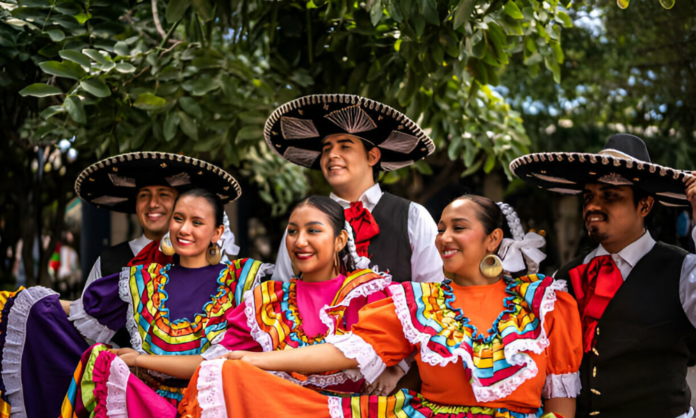The amaziğ, also known as the Berbers or Imazighen, are an indigenous ethnic group native to North Africa, with a rich and diverse culture that spans over 5,000 years. Despite their significant contributions to the region’s history, language, and traditions, the Amazigh have long been overlooked and marginalized. In this article, we will delve into the fascinating world of Amazigh culture, exploring their history, language, customs, art, and spiritual beliefs, highlighting the significance of their heritage and its relevance in modern times.
History and Origins
The amaziğ are believed to be the original inhabitants of North Africa, with archaeological evidence tracing their presence back to the Paleolithic era. Over time, they developed complex societies, establishing powerful kingdoms and empires, such as the Numidian and Mauretanian kingdoms, which played a significant role in the ancient Mediterranean world. The Amazigh were also instrumental in the spread of Islam in North Africa, with many notable scholars and theologians hailing from Amazigh backgrounds.
Language and Literature
The Amazigh language, also known as Tamazight, is a branch of the Afro-Asiatic language family, with various dialects spoken across the region. Despite centuries of colonization and Arabization, the Amazigh language has survived, with efforts underway to standardize and promote its use in education, media, and official contexts. Amazigh literature is rich in oral traditions, poetry, and storytelling, with notable works including the epic poem “The Tale of the Amazigh” and the writings of celebrated authors like Mohammed Chukri and Driss Ksikes.
Traditional Clothing and Adornment
Amazigh traditional clothing is renowned for its vibrant colors, intricate patterns, and symbolic motifs. The attire varies across regions, with each tribe boasting its unique style and designs. The iconic Amazigh jewelry, often featuring silver and precious stones, is not only a symbol of beauty but also carries spiritual and cultural significance. The traditional tattoo art, practiced by Amazigh women for centuries, has gained international recognition for its unique designs and cultural importance.
Music, Dance, and Festivals
Ahidous, a traditional Amazigh dance, is a mesmerizing spectacle of movement and rhythm, performed during celebrations and special occasions. The music features a range of instruments, including the bendir, oud, and qraqeb, with songs often telling stories of love, nature, and ancestral heritage. The Amazigh calendar is filled with vibrant festivals, such as the Imilchil Marriage Festival in Morocco and the Yennayer New Year celebrations, which showcase their rich cultural heritage.
Art and Craftsmanship
Amazigh art is characterized by intricate patterns, geometric shapes, and symbolic motifs, reflecting their deep connection with nature and their ancestors. Pottery, weaving, and textiles are renowned for their beauty and durability, with many artisans still practicing traditional techniques passed down through generations. The Amazigh are also skilled metalworkers, woodcarvers, and jewelers, creating exquisite pieces that adorn homes, mosques, and museums.
Spiritual Beliefs and Practices
The Amazigh have a unique spiritual heritage, blending pre-Islamic traditions with Islamic practices. They revere their ancestors and the natural world, believing in a powerful spiritual realm that influences daily life. The Amazigh have a deep respect for the land, animals, and the cycles of nature, which is reflected in their rituals, ceremonies, and daily practices. The revered Amazigh saint, Sidi Hamadou, is celebrated for his wisdom, compassion, and spiritual guidance.
Tribal Identity and Community
The Amazigh are organized into tribes, each with its unique customs, dialects, and traditions. Tribal identity is a vital aspect of Amazigh culture, with kinship ties and community bonds forming the fabric of their society. The Amazigh have a strong sense of hospitality, welcoming strangers and honoring their guests with traditional ceremonies and offerings.
Challenges and Revitalization Efforts
Despite their significant contributions to North African culture, the Amazigh have faced centuries of colonization, marginalization, and cultural suppression. However, in recent years, there has been a resurgence of interest in Amazigh culture, with efforts underway to promote their language, traditions, and art. Governments, NGOs, and community organizations are working together to recognize and protect Amazigh rights, preserve their cultural heritage, and promote their unique identity.
Conclusion
The Amazigh culture is a treasure trove of history, traditions, and identity, reflecting the resilience and creativity of this ancient ethnic group. As we celebrate their heritage, we acknowledge the struggles they have faced and the importance of recognizing and respecting their rights. By embracing the rich culture of the Amazigh, we enrich our understanding of North Africa’s diverse heritage and promote a more inclusive and equitable
